has 13+ years experience in web development, ecommerce, and internet marketing. He has been actively involved in the internet marketing efforts of more then 100 websites in some of the most competitive industries online. John comes up with truly off the wall ideas, and has pioneered some completely unique marketing methods and campaigns. John is active in every single aspect of the work we do: link sourcing, website analytics, conversion optimization, PPC management, CMS, CRM, database management, hosting solutions, site optimization, social media, local search, content marketing. He is our conductor and idea man, and has a reputation of being a brutally honest straight shooter. He has been in the trenches directly and understands what motivates a site owner. His driven personality works to the client's benefit as his passion fuels his desire for your success. His aggressive approach is motivating, his intuition for internet marketing is fine tuned, and his knack for link building is unparalleled. He has been published in books, numerous international trade magazines, featured in the Wall Street Journal, sat on boards of trade associations, and has been a spokesperson for Fortune 100 corporations including MSN, Microsoft, EBay and Amazon at several internet marketing industry events. John is addicted to Peets coffee, loves travel and golf, and is a workaholic except on Sunday during Steelers games.
I was reading my morning twitter feed and found an interesting new toy called how the world is searched. It looks like it might be a snap shot of 2010 Google Insights. Just some nice eye candy. Enjoy.
Today Google announced the release of their new operating system Google Chrome OS.
This is the follow up to the Google Chrome Browser which has had some success reaching about 10% market share. (based on data from http://marketshare.hitslink.com/).
The Google operating system is an open source alternative to Linux, offering a very fast and lightweight OS, which will probably load fast and work well (like most other Google products). We all know that Windows is a BIG, heavy and slow operating system, and although Windows 7 is a great improvement over Vista, it is by no means efficient.
The one problem I see with the release of the Google Chrome OS is that there are two kinds of people in the world; the Windows people who fear anything “not Microsoft Windows” and the tech savvy Microsoft hate group of Linux Users (who tend to love http://www.ubuntu.com/). I am not really sure where the market for the Google Chrome OS is coming from? I guess they may be able to peel a little off both groups, but the Microsoft Windows Users really think that their computers will not work without Windows.
I may have to take a closer look at the Google OS, will update you on my direct experience.
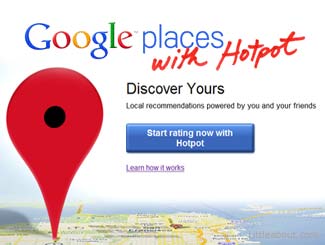 Think of it this way – As we travel through a new type of landscape we are guided by signs as always. But the source of the signs and information is much different. Travelers are creating the guidelines and providing directions for the inquiring traveler. This is what happens with Google Profile. Users rate/review businesses, restaurants and service providers based on their experience.
Think of it this way – As we travel through a new type of landscape we are guided by signs as always. But the source of the signs and information is much different. Travelers are creating the guidelines and providing directions for the inquiring traveler. This is what happens with Google Profile. Users rate/review businesses, restaurants and service providers based on their experience.
If you are in a neighborhood that is popular with you and your circle of friends you can use Hotpot to find restaurants, bookstores, business offices etc. that will include the locations that are popular with your friends.
Here’s the recipe:
Add an ingredient with a decidedly local flavor to an icon of the Internet world and what do you get? Google Hotpot, a new dish that is seemingly a combination of Places and Profiles. What does this new menu item do for us, the user?
It helps us find local destinations, like businesses and restaurants.
This creates a large database of information in Places, of course. But it also helps the Internet behemoth with another task – making suggestions to users in the future. Add the “friend” touch and you have a referral and suggested destination business model called Hotpot that guides you to physical locations in your area.
How it Looks
A quick look reveals an uncluttered, almost simplistic, design – just what you would expect from Google. Hey, it works!!
Sign in and start rating, that’s all there is to it.
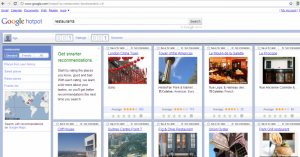
Obviously, you can do your rating and searching on your computer. But these actions are also available on the Android 1.6+ phone with the Google Maps 4.7 update.
At this point the emphasis is on good places to eat and drink – you know, restaurants and cafes. But Google Hotpot isn’t limited to consumption of food and beverages. Users can review any retail site, schools, libraries, even a nice park for a bit of quality time outdoors. A recent count by Google indicated that users have already placed millions of reviews on the service.
For example, one of the icons of Southern Illinois and the St. Louis Metro-East area is the Brooks Catsup bottle. This huge landmark is atop a tower in the town of Collinsville. Want to find this unusual site? It’s on Google Hotpot, complete with a color photograph and address.
Simply click on the number next to the average rating (five star system) and you can read the individual comments and reviews. Choose the business name – the live link at the top – and you are taken to a page with a map, address and review information. You may even get another photo.
Why Hotpot Now?
Most of the early reviews of Hotpot emphasize that this is a way for Google to take on such social sites as Facebook, Yelp and others. The focus is local. But there is supposed to be a significant difference with Hotpot. Reviews and information come only from people that are brought into your network.
The product manager for Google wrote, “With Hotpot, we’re making local search results for places on Google more personal, relevant and trustworthy.”
The idea is not particularly cutting-edge because there are several other ways to connect with friends and recommend places to spend time and money. For example, a user can select Yelp for the closest city and find all sorts of information about restaurants and other businesses.
But This is Google!
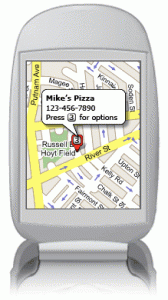 That will capture a lot of attention. Throw in the Android access and Google Hotpot is coming into this market at a time when the Internet and World Wide Web are about “apps,” not searching. We are gradually moving into an electronic world that won’t require much searching. Some say we are there already.
That will capture a lot of attention. Throw in the Android access and Google Hotpot is coming into this market at a time when the Internet and World Wide Web are about “apps,” not searching. We are gradually moving into an electronic world that won’t require much searching. Some say we are there already.
We mentioned the key word “local” a bit earlier but we should have mentioned another key word in this scenario – “social.”
Social networking is far from new. In fact, we could argue that the Internet and the Web have been “social” for years. But with Hotpot, the world’s fastest-growing company, Google, is making a statement – We are more social. We are more local.
As one Hotpot review stated, this is the way things work now.
The Google LatLong Blog says Hotpot makes about 50 million locations available, as indicated on Google Places. Users step into the process to share their recommendations with friends, based on individual tastes and interests. When the iPhone Places app comes online Hotpot will add thousands more mobile users.
If all of this doesn’t seem earth-shaking, consider the one ingredient Google has that even the other social platforms don’t have. It’s called “consumer reach,” according to http://venturebeat.com/
Does this mean that Yelp and Foursquare will gradually wither and die on the vine? Probably not, at least for the very near future. But it is possible that Google Hotpot could be the killer app when it comes to navigating the local scene.
On a technical basis, Hotpot is, for the most part, a free-standing service. But if Google and its users decide to do some serious “mashing” and combining, Google Hotpot might stand next to “GPS” as the way to find your way around.
The merging of services hasn’t happened yet. Users still have to work with Hotpot on its own turf. But this will probably change sooner rather than later.
Some veteran industry observers are less than enamored of Google Hotpot. It’s nothing new or particularly useful, they say. What will the world say?
Stay tuned.
I am sure many people out there have tried to get included in Google News. We have been successful in getting multiple websites included in Google news. Recently we have been working fairly hard to get busy blogging. We decided to attempt to get SEO Moves included in Google news. Just for fun I am going to include the thread of conversation I have had with the people at Google News:
#1- Request Inclusion to Google News
#2- wait……
#3- Google News Replied:
“Hi john,
Thank you for your note.
We reviewed your site and are unable to include it in Google News at this time. We currently only include sites with news articles that provide timely reporting on recent events. This means we don’t include informational and how-to articles, classified ads, job postings, fictitious content, event announcements or advice columns.”
#4- SEO Moves Reply Back:
“Hi Google,
In looking at a search today for search engine optimization- the results include a bunch of posts from ZDnet (screen capture included). These posts are really along the lines of what we post, but written by one man who proclaims himself to “NOT” be an SEO expert?
I wish you would reconsider our inclusion as we are really giving people strong real time advice, and tips. 100% white hat information and we are working hard to help the small and medium size businesses succeed online.”
#5- Google News Reply:
“Hi John,
Thank you for your reply and for providing us with this additional information about your site. As we previously mentioned, the articles in Google News report on recent events. We currently don’t include informational and how-to articles, classified ads, fictitious content, job postings, event announcements, or advice columns.
Thanks for your interest in Google News.
Regards, The Google News Team”
Lets Take look at Google News Today for fun:
Not too long ago, Wired magazine ran an article by Chris Anderson and Michael Wolff entitled “The Web is Dead, Long Live the Internet.” In the introduction to that article the authors write, “Two decades after its birth, the World Wide Web is in decline, as simpler, sleeker services – think apps – are less about the searching and more about the getting.”
If this is true, finding your way to the top of the search engines won’t be quite so crucial, in terms of business success. The authors note that people may spend their entire day on the Internet and never really search the Web. Specific apps for email, social sites, news and business resources make it unnecessary to type and search.
Anderson and Wolff urge the skeptics among us not to toss this off as “a trivial distinction.” They call the new model “semi-closed platforms” that use the Internet as a transportation device. But there is no basic need for a browser to display pages. The bottom line is it’s “a world Google can’t crawl.”
What does it mean to rank #1 on the major search engines in 2010 and beyond? Is it as important as being the “big dog” a few years ago? Or, as some believe, is it not quite as important as in the past?
Off to the Races?
 The year 2010 may be remembered as the period of time when use of the Web and Internet changed significantly. What change, you may well ask? It seems obvious that if the majority of people are starting to fine-tune their Web use to the point of using only a handful of specific apps, the key factor is going to be speed.
The year 2010 may be remembered as the period of time when use of the Web and Internet changed significantly. What change, you may well ask? It seems obvious that if the majority of people are starting to fine-tune their Web use to the point of using only a handful of specific apps, the key factor is going to be speed.
Several industry observers have started to focus on page-load speed as one of two or three major factors for Web site success. For example, professionals in this field are urging Web designers and administrators to offer thumbnails of images so that the visitor doesn’t have to wait for a full-size image to load. Give the viewer the option to select the larger image. It’s a simple step.
In keeping with this trend toward almost-instant gratification, Google has come forward to emphasize page speed as a key factor. After all, for Google to be successful millions of Web users around the world must continue to search. One of the primary “enemies” of the old search pattern is the mobile device.
As cell phones and other devices take on tasks formerly completed only on a powerful desk computer, the need to search will be in decline. Sites will be developed for mobile devices and for the specific applications that work best on the mobile device.
Take the Local
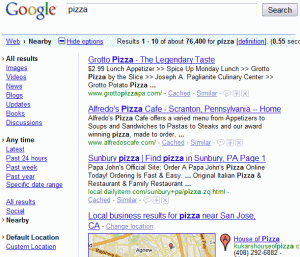 As we discuss this major change in Web use we should also consider this thing called the local search. In simple terms, being #1 worldwide will mean less if a viewer limits the search (and use) to fewer sites. For example, businesses of all types may start to limit their marketing to sectors such as Google Places or to Hotpot (interesting name). This last item is a ratings tool as well as a recommendation engine for Google Places. It’s designed to focus on local service, based on visits and recommendations from friends and other users.
As we discuss this major change in Web use we should also consider this thing called the local search. In simple terms, being #1 worldwide will mean less if a viewer limits the search (and use) to fewer sites. For example, businesses of all types may start to limit their marketing to sectors such as Google Places or to Hotpot (interesting name). This last item is a ratings tool as well as a recommendation engine for Google Places. It’s designed to focus on local service, based on visits and recommendations from friends and other users.
Will search-engine optimization maintain its place as a key to Web site success? The answer could be “yes” and “no” together. Relevant, reliable content that is useful on a consistent basis will still put sites near the top of the priority list. One good example for incorporating the speed idea into the mix is using WebP images that will load faster than bulky JPEGs.
Here are some reasons why we should start using WebP:
Perhaps one of the most important ideas Webmasters, developers and marketers can take from this discussion comes from Anderson and Wolff, authors of the Wired article. “The fact that it’s easier for companies to make money on these platforms only cements the trend. Producers and consumers agree: The Web is not the culmination of the digital revolution.”
A Few More Thoughts
Listing the key items for WebP use and including the emphasis on making money makes the argument for page speed quite strong. However, WebP won’t be an industry-wide standard immediately. Most people will continue to use JPEG or another popular format in the near future. But designers and administrators should give serious thought to using thumbnails to reduce load time.
As for the idea of making money on the Web, we might go back to the old real estate mantra “location, location, location.” Make sure your Web content is placed properly and the page-to-page connections are efficient. Add the local ingredient to your Web marketing to secure your place in a defined area.
Here’s a sobering thought for the doubters out there. The Wired article points out that a 1997 cover story in that magazine was already urging readers to “kiss your browser goodbye.” The emphasis for the future, according to this theory, was going to be on applications for specific purposes and a Web that was getting closer to “out of control.”
Walled gardens in which users were controlled by the provider certainly didn’t prove to be the success model. Google seemed to have “it!” But now it seems that even this game-changing business model wasn’t the final answer. Stay tuned.
Using page speed as a primary factor in the search-engine process will only affect a tiny percentage of sites, according to information from Google. The company provides a number of ways to speed up sites. Webmasters should probably take look at these. code.google.com
 The key is using filters that drive down to best performance practices on the pages. The module includes filters to optimize JavaScript, HTML and CSS style sheets, along with filters to optimize JPEG images and PNG images.
The key is using filters that drive down to best performance practices on the pages. The module includes filters to optimize JavaScript, HTML and CSS style sheets, along with filters to optimize JPEG images and PNG images.
When word first came out about mod-pagespeed there was a tendency to panic. Developers and Webmasters found that in addition to the dozens of factors affecting search-engine rankings Google was going to start using speed as a primary factor. The questions were:
Here’s the bottom line on mod_pagespeed: Webmasters and developers will use this to improve performance of Web pages. But there is some specific information these developers will need to know. This is open-source Apache software used to automatically optimize pages and content served with the Apache HTTP server.
Using mod_pagespeed in combination with the correct compression and caching steps should result in significant improvement in loading time.
Basic Steps
 Before committing to the use of mod_pagespeed be sure you are working with Apache 2.2 since there aren’t any plans to support earlier versions. If you’re up to it you can develop a patch for these early versions.
Before committing to the use of mod_pagespeed be sure you are working with Apache 2.2 since there aren’t any plans to support earlier versions. If you’re up to it you can develop a patch for these early versions.
According to the best information available, mod_pagespeed can be downloaded as binary code for i386 and x86-64 bit systems through svn. Google instructions add: “It is tested with two flavors of Linux: CentOS and Ubuntu. The developer may try to use them with other Debian-based and RPM-based Linux distributions.”
Several filters have already been mentioned but Google puts special emphasis on “exciting experimental features such as CSS outlining.” This enhances the ability to draw around some page elements to help them stand out to the viewer. Developers and Webmasters can set outline color, width and style.
Achieving optimum page speed is the goal but Webmasters have to take compression, caching and order of download into consideration. It’s also important to reduce the number of trips back to earlier pages and to cut down the number of round trips from page to page.
As you learn more about this significant change in the function of search engines and the Web you may want to understand Page Speed, an open-source add-on for Firefox/Firebug. This is used to evaluate page performance and find ways to improve results.
This is an extension to Mozilla Firefox that runs in the Web development package. Running a performance analysis on a page brings the user a set of suggestions and rules to follow for improvement. Page Speed measures page-load time so that it presents the issue from the user’s viewpoint.
Rich Get Richer?
 So, with this additional information about using page speed as a search-engine factor, should we all start to worry about the “big boys” crushing the smaller sites? As we mentioned in brief earlier, this was a cause for concern among Webmasters, developers and site owners. But a blog from Matt Cutts in April went a long way toward reducing the stress of this announcement.
So, with this additional information about using page speed as a search-engine factor, should we all start to worry about the “big boys” crushing the smaller sites? As we mentioned in brief earlier, this was a cause for concern among Webmasters, developers and site owners. But a blog from Matt Cutts in April went a long way toward reducing the stress of this announcement.
He literally thinks this is not that big a deal. His reasons include:
There are a lot of sources for learning about site speed, mod_pagespeed and other factors in this process. Google has devoted a section of their Web presence to the issue. See code.google.com As for the problems presented to small sites, Cutts and others believe that smaller sites will be able to react more quickly and would actually feel fewer negative effects.
Keep in mind that when we took a brief look at Page Speed above (the open-source tool) we mentioned that the emphasis is on load time. That is the amount of time that passes between a user request and the time when they are able to see the full page, with all graphics, images and text.
Some larger sites with complex designs may suffer if they can’t figure out a way to speed up their load time. Part of the answer may be in the move to larger hosting companies that can afford to put lightning-quick servers into operation.
But there’s still another issue with using page speed. The tendency among quality Web companies is to analyze every detail of operation. Google Analytics can slow down load time as it tries to gather significant data. How will this be folded into overall operation of a site?
To Sum Up
Slow page-loading leads to loss of viewers. Studies have shown this to be true. Even if a site is very popular, users will drift away because of slow response times. It may take a week or two for them to build up the courage to come back. At this point it’s best to take a few basic steps such as reducing download size if possible, improving layout and minimizing round trips between pages.
We don’t need to panic about mod_pagespeed but then we probably shouldn’t be shouting from the rooftops either. The best path is somewhere between these two extremes.
A traditional sitemap is a rather simple and efficient way for a Web site visitor to find a specific page or section on a complex Web site. It’s best to start with a home-page link then offer a list of links to main sections of the site. Those sections can offer details to pages. Be absolutely sure the links are accurate and take the visitor to the exact location described.
I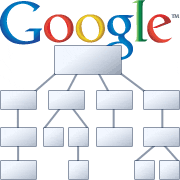 n addition, it’s generally best to provide one page (sitemap) where search engines can find access to all pages. A search engine sitemap is a tool that the Web designer or administrator uses to direct search-engine spiders based on frequency and order within the Web site.
n addition, it’s generally best to provide one page (sitemap) where search engines can find access to all pages. A search engine sitemap is a tool that the Web designer or administrator uses to direct search-engine spiders based on frequency and order within the Web site.
So, when we see the term “sitemap” we are fairly sure we know what we are dealing with. The term is very descriptive of the job that this online tool is designed to do. But what about sitemaps for search engines? How do they work? In what specific ways can sitemaps help both developers and users?
Ready-Made Sitemaps for Search Engines
Several companies offer online tools that will “spider” the Web site and create a search-engine sitemap. Some of these services will work with hundreds of pages without charge. If you require the spider to work with more than 500 pages you will have to pay a basic fee. Most of these tools come with instructions on how to apply the sitemap to your site. Once the sitemap is in place you will need to submit it to search engines that will “spider” it.
This gets us to the point at which we have established a multiple-sitemap strategy. Our first, traditional sitemap is created so that visitors to your Web site have a good resource for finding their way to your content. The traditional sitemap comes with an added benefit: keyword weight to the linked pages.
Our strategy doesn’t stop there, however. The search engine sitemap lets the most-used search engines know which pages should be part of their databases. Organization and frequency are the keywords here!
Video Sitemap
We know the standard sitemap will help visitors find their way to the quality content on your site and the search engine sitemap is the key to an efficient and successful sitemap. But you may want to consider additional assistance for visitors that uses video?
When your well-designed site includes links to video players, links to other video content associated with your site and, of course, video on your own pages, you need to make sure that the major search engines (and visitors) can find what they want and need. A search engine bot will only find your video if you include all the necessary information: title and description; URL for the page on which the video will play; URL for a sample or thumbnail; other video locations, such as raw video, source video etc.
You shouldn’t be too concerned about how much space you’re taking up with video sitemaps because many tools and programs that help you establish video sitemaps will handle thousands of videos. Keep in mind that there will be limits such as a compressed limit expressed in megabytes.
We’ll use Google as an example of formats that will work for video crawling: mpg, .mpeg, .mp4, .m4v, .mov, .wmv, .asf, .avi, .ra, .ram, .rm, .flv, .swf. All files must be accessible through HTTP.
Mobile Sitemap
No, the sitemap doesn’t move! This Web site guide includes a tag and namespace language specific to its purpose. The core of the mobile sitemap is standard protocol but if you create yours with a dedicated tool make sure you can create mobile sitemaps.
This guide uses only URL language that focuses on mobile Web content. When the search engine crawls here it will not pay attention to non-mobile content. In a multiple-sitemap strategy you will need to create a sitemap for non-mobile locations. Make sure you include the <mobile:mobile/> tag!!
See a sample of a mobile sitemap for Google at:
http://www.google.com/mobilesitemap.xml or check other search engines to see what you need to do to make this work as it should. Submit mobile sitemaps as you would others.
Geography and Sitemaps
As with other targeted sitemaps, the subject of targeting certain countries with your sites can consume much more time and space than we have here. But here are some of the basics to get us started.
You can target specific countries when you set up your plan with services such as Google Web Tools. This is accomplished when you submit an XML sitemap. The bottom line is that you can submit multiple sitemaps on one domain.
User experience shows that Web site rankings increase by 25 percent or more for organic traffic. With careful SEO effort on each of the language versions the results could be even more impressive.
Submit and Grow
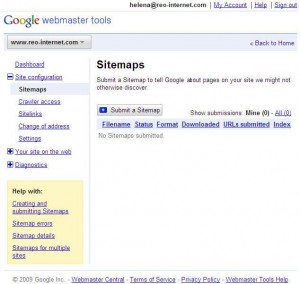 To wrap up this very brief look at the subject of sitemaps, let’s consider a few of the top places for submitting your sitemaps. Keep in mind that search-engine technology has changed and improved so you will need to be familiar with the standards and requirements to be successful.
To wrap up this very brief look at the subject of sitemaps, let’s consider a few of the top places for submitting your sitemaps. Keep in mind that search-engine technology has changed and improved so you will need to be familiar with the standards and requirements to be successful.
Don’t limit yourself to the idea of submitting one URL and having the crawler do the work. This isn’t the most efficient way to get where you want to go. Devote some time to learning about submitting to Google, Bing, Ask.com, Moreover, Yahoo Site Explorer and Live Webmaster Center among others. These seem to be the top destinations in the opinion of most industry observers.
The process of submitting a sitemap differs slightly from one place to another but in general terms you use the “configuration” link and choose “sitemaps.” You’ll need to enter your complete path description in the space provided. Google’s example might look like this- http://www.example.com/sitemap.xml, type sitemap.xml) and choose “Submit.”
You should get confirmation and even a screen shot to show what you have accomplished.
Good luck!
So many creative people step into the online world expecting great things from their Web site, their product or their service. But there is really only one way to find success in this field and that’s through conversion. If you can move a solid percentage of your visitors into leads (then into customers) you are on the right track. Keys to this process are quality content, good design and the right call to action. Then it’s time to test and measure user data with such tools as heat maps.
 When it comes to the idea of “conversions” and “converting” in online business we’re not talking about changing a PDF document to Word or a JPET image to GIF. With the technology available today there are online sites that will perform this service for you. But that’s not the conversion you should be interested in at this point.
When it comes to the idea of “conversions” and “converting” in online business we’re not talking about changing a PDF document to Word or a JPET image to GIF. With the technology available today there are online sites that will perform this service for you. But that’s not the conversion you should be interested in at this point.
We’re interested in is converting Web site visitors to leads that may mean a true increase in business. People have invested money in the pursuit of increased traffic to their Web sites but sometimes don’t go one step further and generate quality leads. This is the major step you need to take to have an effective Web site and to measure site effectiveness.
How It’s Done
While the correct use of keywords, phrases, links and referrals can make a lot of difference in Web success the journey actually begins when you create quality content. Sure, a few junk sites might get good numbers because of the “tricks” of the trade. But long-term success will come with content that offers something valuable and captures the visitor to the extent that the individual wants to engage in a meaningful “conversation” with you.
In addition to quality content your online presence requires above-average design. One key element of good design is simplicity. But this doesn’t mean empty and boring. It means being user friendly, focused and understandable. Great design presents an overall picture that is just what you want your visitor to experience.
If you have interesting and useful content combined with the correct design for your effort you are almost there. What more do you need to do, you may well ask? The third factor is sort of like asking for the order. In this case it’s a call to action. Ask the visitor (potential customer) to take the next step by contacting you in some way. Always provide the “yes” button – an email address, phone number or both. Use a call to action and get the customers you desire.
Ask Them to Act
As you may have guessed, it is common to design a Web site with a wonderful appearance that is easy to use and has useful, interesting content but still fail to capture a solid percentage of visitors. In many cases this happens because the site doesn’t include a call to action in the proper place and at sufficient frequency. A call to action should be a highlight of your Web site.
Your call to action should also be presented in the right form. Does your visitor have the opportunity to request a sample or demonstration? Can he or she ask for a free trial or a no-cost consultation? This type of call to action should garner you more leads than simply asking the visitor to provide contact information. Give them something in exchange. After all, they are giving you themselves.
Make sure your call to action step takes the visitor to a landing page that is easy to use and understand. It is essential that you don’t put roadblocks in the process, especially at the point when a cold visitor is about to become a lead. Deciding at what level to qualify your leads will depend on the industry, product or service. Some qualification is fine as a way to filter out leads that will only waste your time.
How Do You Know?
If you have taken care of the proper steps in the conversion process, as described above, how will you know that your system is working? Of course, monetization of your business should show a positive bottom line. If you’re making money you must be doing something right. But how do you really know that your design and efforts are giving you the best results possible?
The simple answer is: You need to know your Web site’s conversion rate. The information must be a current, accurate report on such ratios as visitor-to-lead, lead-to-sale and visitor-to-client. Some successful online businesses consider this last ratio the most important because it tracks the cold-call visitor through the process and shows which of these visitors become long-term customers.
Visitors become leads when they provide basic contact information that puts them in your system. Depending on your service or product you might expect to get lead information from 5 percent or 10 percent of your visitors. Some of the hottest sites might get a percentage as high as 25 percent. If you have a very specialized product or service that is attractive to only a small niche market you might be satisfied with 5 percent.
To wrap up this brief discussion of a complex subject we should at least consider the use of heat maps as a way to test your content, design and call to action. Using this tool might mean the difference between knowing who your customers really are and not understanding your market.
The right kind of mapping and visual reporting can give you a clear picture of your visitors’ clicks, scrolls and other moves. Think about how valuable a visual image of your visitors’ action could be. Get the real who, how and what when you study conversion by using behavior reports and heat maps that work.
 SEO Moves wanted to thank our Promotional Gifts Supplier gopromotional for the exceptional prices, service and prompt delivery. We wanted a little toy to give out during our visit to Pubcon and waiting til the last minute to order them. Well low and behold we got these little flash drives in 4 days! Unreal.
SEO Moves wanted to thank our Promotional Gifts Supplier gopromotional for the exceptional prices, service and prompt delivery. We wanted a little toy to give out during our visit to Pubcon and waiting til the last minute to order them. Well low and behold we got these little flash drives in 4 days! Unreal.
Check them out:
According to most encyclopedia definitions, organic searches are natural listings/results from a search-engine spider crawling a Web site. The process begins when a keyword is used in a search engine. There is no monetization (pay for these listings. It’s simply the most accurate results according to the work of the search engine. The key word here is “relevant.”
We have to accurately define “organic search results” and determine why they are important (if they still are). This will let us move on to more in-depth information about organic search results for travel. In addition, we will be able to comprehend why some observers of the Web world are writing the “obituary” for these searches on Google.
The Opposite
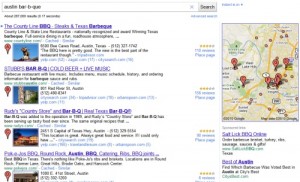 raIn recent weeks the concern has been the “death” of organic search results for travel on Google. In other words, there is concern that the majority of results for the travel industry will be paid advertising. The question is: Will you be able to come up with truly organic search results when you seek travel information?
raIn recent weeks the concern has been the “death” of organic search results for travel on Google. In other words, there is concern that the majority of results for the travel industry will be paid advertising. The question is: Will you be able to come up with truly organic search results when you seek travel information?
Processes such as pay-per-click advertising would qualify as non-organic in this discussion. Major search engines such as Google and Yahoo, for example, use combinations of advertising and search results on their pages. Ads are designed so they look like search results, though background color usually sets them apart. Many non-technical users/end users simply don’t recognize these paid listings for what they are.
Will the big spenders with Google benefit from unique technical assistance so that they achieve better “organic” search engine placement?
As We Know It
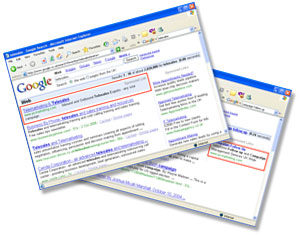 In 2010, Wired magazine carried an article that basically proclaimed the death of the Internet as we know it. The theory seems to be that we will focus on applications (apps) rather than on the search process. It seems that we are moving into a world in which final results are available, with most of the work already completed for you. This is part of the Bing story and may be a factor in the Google changes as well.
In 2010, Wired magazine carried an article that basically proclaimed the death of the Internet as we know it. The theory seems to be that we will focus on applications (apps) rather than on the search process. It seems that we are moving into a world in which final results are available, with most of the work already completed for you. This is part of the Bing story and may be a factor in the Google changes as well.
Some observers have proposed that the idea of the big-money advertisers getting the preferential placements is just good business. The big spenders have account representatives at the Google offices. Scott Buresh wrote for www.searchengineguide.com, “I am willing to bet that this perk was not Google’s idea. Rather, it almost certainly stemmed from the sense of entitlement that those spending large sums on paid search felt and the fact that technical help with their organic search engine placement is what they demanded.”
He asks whether Google can continue to work with its “Don’t Be Evil” philosophy. Will this be replaced by a philosophy that focuses on keeping shareholders happy?
Upgrades and Improvements?
 The concern about the death of organic search results for travel grew from an announcement by Google about upgrades to the search process. When search results are displayed the user will see a much different design. Two major items that will be obvious to regular users will be maps on the right side of the screen and additional content that is not actually part of results listings.
The concern about the death of organic search results for travel grew from an announcement by Google about upgrades to the search process. When search results are displayed the user will see a much different design. Two major items that will be obvious to regular users will be maps on the right side of the screen and additional content that is not actually part of results listings.
The problem seems to be that this will create confusion rather than being an improvement. In some cases the organic search results that most Google users are familiar with end up with borders that set them off, though this section doesn’t have the colored background that paid listings have.
Another user, from another part of the world, gets similar results but the organic results are not set off by a border and appear as they generally do with organic searches. Google has already written about this change and insists that what they call Universal Search results are definitely organic, not paid for or click-based.
Kevin May wrote, on www.tnooz.com, that an experienced analyst for a digital-marketing agency expressed concerns about the design.
“This forces brands to consider Google as a content destination as well as a search provider. Google Places may well be significant in this. It’s not surprising Google is doing this, it’s long been predicted Google would expand Universal Search into a polymorphic vertical search.”
Content Destination
For some who have long supported the openness and freedom of the Internet and the World Wide Web the idea of the major search engine morphing into a content destination is troublesome, at best. Of course, Google has expanded and changed through the years, offering products and services that many find useful, even essential, in the online world.
It seems that some users are beginning to question why Google can’t keep its search-engine service separate from its revenue stream. While this hasn’t been the case for years, it might seem that the limited paid-for results of the past are becoming just that – a thing of the past.
We all know that page design is one of at least three major factors in successful online marketing. Design works hand-in-hand with quality content and a call to action. If Google search results are becoming content destinations, at least in the travel arena, how long will it be before there is an overt call to action for the biggest advertisers?
In the opinion of some long-standing Web watchers, the design, placement and percentage of page coverage devoted to larger revenue streams is already a covert call to action. If the search results for travel are no longer truly organic can other commercial sectors be far behind?